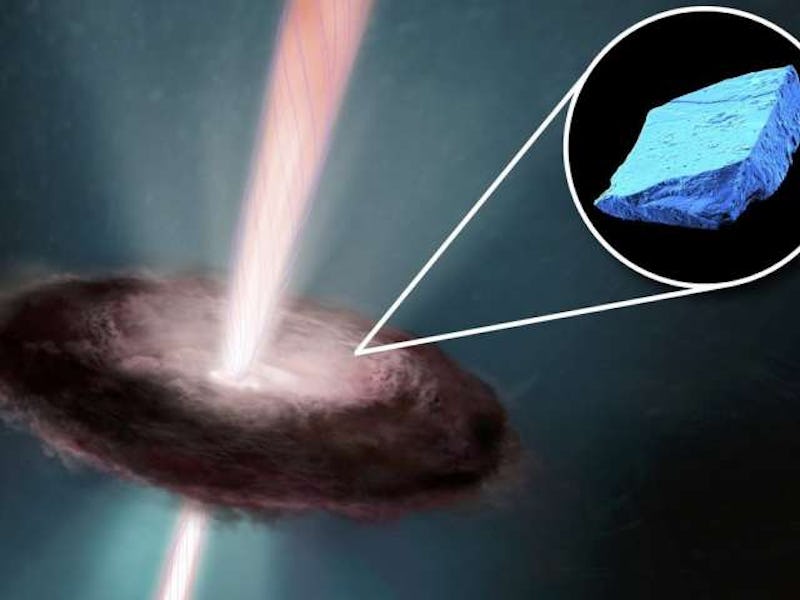Ancient Blue Crystals Trapped in Meteorite Reveal the Sun's Violent Past
'They're quite beautiful.'

The most popular girl in space school is Mars and Miss Congeniality is the Moon. But we all know that the real (literal) star of the show is the sun. Like any diva, the sun is veiled in an air of mystery, making it hard to actually know her. But a fascinating new Nature Astronomy study exposes her backstory with the help of some ancient blue crystals, shedding a light on her wild origins.
According to the study, released Monday, ancient blue crystals unearthed from meteorites are key to understanding what the sun was like during its earliest days. The swirling sphere flared into existence about 4.6 billion years ago, about 50 million years before our own planet formed. During its tumultuous youth, it forcefully ejected high-energy molecules into space — which sometimes crashed into objects, leaving a record of its early angst.
Some of those objects are the blue microscopic crystals, technically called hibonites, taken from a chunk of the Murchison meteorite, which crashed into Australia in 1969. With the mass spectrometer at the Institute of Geochemistry and Petrology, the scientists shot lasers at the hibonites, releasing gases trapped inside of them.
The resulting small puffs of helium and neon provided insight into the early days of the sun because they’d been stuck inside the tiny crystals for the past 4.5 billion years. The working theory is that before the planets formed, the Solar System consisted entirely of the Sun and the massive, extremely hot ring of gas and dust swirling around it. As all that hot matter began to cool from a searing 2,700 °F, it formed minerals, including the blue hibonite crystals that eventually ended up as targets for the young Sun’s powerful emissions.
Close view of the very small hibonite crystal.
“The larger mineral grains from ancient meteorites are only a few times the diameter of a human hair,” explains co-author and University of Chicago professor Andrew Davis, Ph.D. . “When we look a pile of these grains under a microscope, the hibonite grains stand out as little light blue crystals — they’re quite beautiful.”
These crystals, which also contain elements like calcium and aluminum, captured some of the protons the young Sun was shooting out into space as it whirled about. These protons hit the elements, split them apart, and created the gases neon and helium — which remained trapped inside the crystals until Davis and his team shot them with lasers.
The scientists believe that the existence of these gases confirms the long-suspected theory that the Sun was much more active in its early days. That’s exciting because it reveals insight into the force that allows us to live, but it also likely means, according to co-author and fellow University of Chicago researcher Philipp Heck, Ph.D. that “we’ll gain a better understanding of the physics and chemistry of our natural world.”
“It’s always good to see a result that can be clearly interpreted,” Heck explained. “The simpler an explanation is, the more confidence we have in it.”